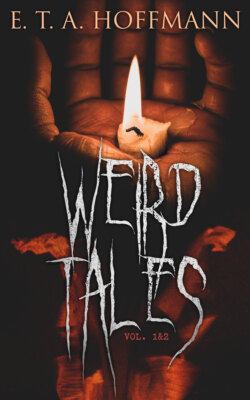Читать книгу Weird Tales (Vol. 1&2) - E. T. A. Hoffmann - Страница 5
FOOTNOTES TO "THE CREMONA VIOLIN":
Оглавление1. The Amati were a celebrated family of violin-makers of the sixteenth and seventeenth centuries, belonging to Cremona in Italy. They form the connecting-link between the Brescian school of makers and the greatest of all makers, Straduarius and Guanerius.
2. A reference to Ariosto's Orlando Furioso. Astolpho, an English cousin of Orlando, was a great boaster, but generous, courteous, gay, and remarkably handsome; he was carried to Alcina's island on the back of a whale.
3. Giuseppe Tartini, born in 1692, died in 1770; was one of the most celebrated violinists of the eighteenth century, and the discoverer (in 1714) of "resultant tones," or "Tartini's tones" as they are frequently called. Most of his life was spent at Padua. He did much to advance the art of the violinist, both by his compositions for that instrument as well as by his treatise on its capabilities.]
4. This was the name of a well-known musical family from Bohemia. Karl Stamitz is the one here possibly meant, since he died about eighteen or twenty years previous to the publication of this tale.
5. Vincenzo Pucitta (1778–1861) was an Italian opera composer, whose music "shows great facility, but no invention." He also wrote several songs.
6. Il Portogallo was the Italian sobriquet of a Portuguese musician named Mark Anthony Simâo (1763–1829). He lived alternately in Italy and Portugal, and wrote several operas.
7. Literally, "The slave of a primo uomo," primo uomo being the masculine form corresponding to prima donna, that is, a singer of hero's parts in operatic music. At one time also female parts were sung and acted by men or boys.
8. Leonardo Leo, the chief Neapolitan representative of Italian music in the first part of the eighteenth century, and author of more than forty operas and nearly one hundred compositions for the Church.
9. Giambattista Martini, more commonly called Padre Martini, of Bologna, formed an influential school of music there in the latter half of the eighteenth century. He wrote vocal and instrumental pieces both for the church and for the theatre. He was also a learned historian of music. He has the merit of having discerned and encouraged the genius of Mozart when, a boy of fourteen, he visited Bologna in 1770.
